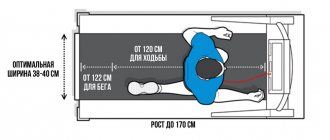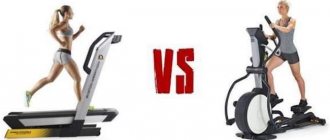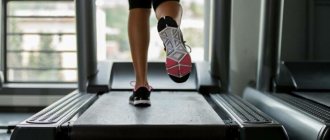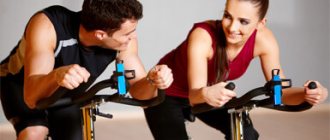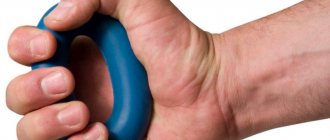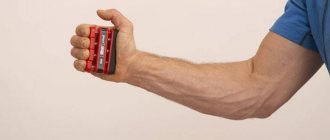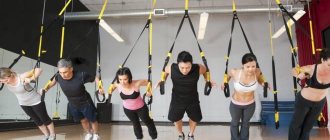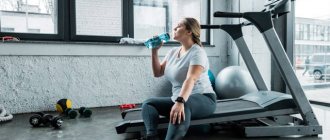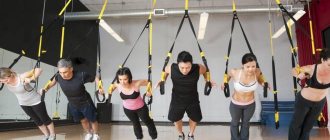What is a treadmill is the main question that needs to be answered. It's essentially a cardio machine. Its task is to simulate physical activity in the form of walking or running. This is done through a continuously moving web. At the same time, you can practice at home, without going outside. This type of fitness has a beneficial effect on the body. Exercises are useful for cardiac stimulation, restoration of muscle functions, achieving the desired figure, improving blood circulation and metabolism, increasing body tone. At the same time, the speed of movement remains under the control of the trainee.
Content
- The benefits of working out on a treadmill
- How to choose the right treadmill
- Types of treadmills
- What does a treadmill consist of?
- What to look for when choosing a path for your home
- Shock absorption system
- Selecting engine power in relation to user weight
- Selecting track size
- Treadmill speed
- Incline angle and load levels
- Structural stability
- How to use a treadmill
- Preset programs, training programs
- What else will be useful in addition to the track itself?
- Bottom line
According to statistics, most people do not walk two thousand steps a day. During the day we sit at work, in a car or public transport, and at home we spend time in front of the TV on the sofa. This lifestyle can lead to excess weight, diseases of the cardiovascular system and the musculoskeletal system. The salvation from these problems can be greater physical activity and the best option is walking and jogging.
It’s good to run outside, because the body receives a natural anaerobic load, the lungs are filled with oxygen, and if jogging takes place in nature in a picturesque area, then aesthetic pleasure is added to the sports training.
However, not everyone has the opportunity to run in the park, and running along city paved streets among people and cars will not bring much pleasure. And the weather is not always pleasant with sunny days. A treadmill will help you exercise without leaving the comfort of your apartment or your favorite gym.
Power rack and barbell
Weighted squats and deadlifts are considered compound exercises because they work multiple muscle groups at once. A power rack is found in any modern gym. No good training program would be complete without this equipment. Important information about squats:
- You need to squat until parallel to the floor. This will allow you to get the maximum result from the exercise.
- A low squat with a wide stance is used to target the glutes, while a squat with a narrow stance will help engage the quads.
- The muscles of the core and back are actively working. With the correct technique for performing the exercise, your back should be straight and your abs tense.
The barbell is an addition to the power frame. Its purpose is to secure weights (pancakes). You can perform hundreds of exercises with a barbell. It is necessary to remember the following operating principles:
- You need to take care of good posture and ensure that your body does not sway. Stabilizing your torso is so important because rocking can cause injury.
- Particular vigilance must be maintained when raising and lowering the barbell, since at this moment there is a risk of injury.
- You should not immediately apply a lot of weight when performing exercises with a barbell; the load should be increased gradually.
- To get good results from classes, you need to use the right technique. Ideally, it is better to work out with a trainer at first, and only then work on your own. If it is not possible to take personal training, you can ask advice from experienced athletes who train in the gym. There will definitely be people who will show you the correct technique and check whether the exercise is performed correctly.
The benefits of working out on a treadmill
The benefits of training on a treadmill are the same as those of running outside: the cardiovascular system is strengthened, endurance is developed, muscles and immunity are strengthened, stress is reduced and excess weight is lost. The treadmill will allow you to run or walk at a brisk pace, regardless of the weather. In addition, there is no risk of catching a cold if you get caught in the rain in the fall, breathe in the cold winter air, or sweat in the summer heat.
Benefits of a Treadmill
- During training, different muscle groups work, not just the legs.
- It is possible to run at the same pace for a selected time, which is necessary for tempo training.
- Jogging is carried out on a flat surface with shock absorption, as opposed to the road surface, so it is excellent for preventing or recovering from injuries.
- If there is no uphill outdoors, then on a treadmill such conditions can be created by changing the angle of the platform.
- There is no connection to weather conditions or any other circumstances that interfere with training.
- Using a treadmill, it is easier to practice your running technique, monitor your pulse, blood pressure and breathing, and monitor your speed and distance traveled.
- It is possible to calculate calorie consumption.
- Some treadmill models remember the settings and can even create a workout program based on the user's weight, age, and height.
Modification for bringing and spreading limbs
Very convenient, simple trainer. It is necessary to bring and spread your legs in a sitting position, pushing the resistance outward. The device is popular among both beginners and professionals. However, before doing the exercise, you need to warm up well. You need to do the approach smoothly and slowly, avoiding sudden movements. Otherwise, you can injure your muscles.
It is important to avoid the following mistakes: performing approaches with insufficient weight, spreading the legs too wide, moving too quickly. Basically, when working on the simulator, the adductor femoral muscles work, as well as the gluteus maximus, secondary muscles, etc.
How to choose the right treadmill
In order for classes to take place with maximum benefit, it is important to purchase a model that is correctly suited for its purpose. The running track must meet your requirements in many aspects:
- The dimensions should allow you to place the treadmill at home so that it does not take up most of the room. For a small apartment, it is better to choose a folding or portable model.
- The length of the treadmill treadmill directly depends on a person’s height: the taller the user, the greater the width of his step. Not only comfort during training, but also safety depends on the size of the moving belt: the wider and longer the belt, the less likely it is to jump off it and fall. The length of the canvas can be from 90 to 160 cm, and the width - from 32 to 60 cm. If the path is chosen exclusively for walking, you can choose a model with a narrow tape.
- Load capacity is one of the main parameters when purchasing a treadmill. The maximum user weight must meet the technical requirements of the device, otherwise rapid wear or even failure may occur. The design load of the machine should be several kilograms greater than the weight of the heaviest user.
- Some designs can weigh up to 160 kg, and the higher the weight, the better the shock and vibration absorption during training.
- The maximum speed of the belt is selected taking into account the level of physical fitness of the user and the goals that he sets for himself. For walking, a speed of up to 10 km/h is sufficient, with an average level of physical fitness - 10-16 km/h, and an experienced athlete needs a model capable of accelerating more than 20 km/h.
- Adjusting the incline angle will allow you to diversify your workouts, creating an imitation of climbing a mountain and increasing the load.
- In addition to these criteria, it is worth considering the functionality of the home treadmill: you need to decide whether pace meters, time counters, pulse counters, pressure counters and other parameters are needed.
A home treadmill should have a durable frame, a reliable moving belt and a convenient display. According to their design and operating principle, treadmills are of three types: mechanical, magnetic and electric.
Types of treadmills
What is a mechanical treadmill?
The advantages of a mechanical treadmill are cost-effectiveness, ease of use and maintenance. Such paths are compact and inexpensive, do not require a power source and can be used anywhere: in an apartment, on the veranda of a country house or in a country house. The load level in a mechanical treadmill is controlled by the inclination of the running belt or the braking force of the front shaft.
The mechanical treadmill is powered by the movement of the athlete's legs, so it is not suitable for beginners who are not accustomed to maintaining a constant pace while running. It is also not recommended to use such exercise machines for people with joint problems or varicose veins due to the lack of shock absorption and additional stress on the legs. In a mechanical track, it is not possible to set a specific program or obtain expanded information about the state of the body during classes, because there are either no sensors at all or few of them.
What is a magnetic treadmill?
The magnetic treadmill running belt is also driven by the user’s feet, but unlike a mechanical one, where the movement is jerky, the belt moves more smoothly and evenly. This is achieved due to the fact that the drive magnetizes the blade, attracting it to the base along its entire length. Various load levels are adjustable without changing the angle of inclination. This option costs a little more than a mechanical device, but is most often equipped with a display that shows heart rate, distance, speed and calorie consumption.
What is an electric treadmill?
This is the most popular type of treadmill despite the fact that they are more expensive, larger, heavier and depend on the power source. The movement of the web is provided by an electric motor, so the speed can be adjusted within a wide range. The smooth running of the belt allows athletes of any age and level of training to train, as well as use sports equipment for people who need walking for rehabilitation.
The electric treadmill is controlled by a microcomputer, with which you can adjust the angle of the base, create your own training program and control various parameters of both exercise and body condition. Depending on the class of device, programs can range from 6-8 to 20 for premium tracks. Some devices allow you to listen to music or watch movies while working out and even connect to the Internet or mobile devices via Wi-Fi.
Advantages
Under its own weight
- Safe models that do not overload your body during exercise more than it can currently bear.
- Suitable for initial training.
- Promotes weight loss and body contouring.
- The cost is significantly lower than other types.
Weight loaded
- Allows you to work out internal muscle groups.
- Correct the size and shape of muscles.
- Suitable for a wide range of basic exercises.
- The design is compact: the dimensions are intended for installation in the fitness room and for home use.
- Suitable for people with zero, basic and professional training.
With built-in weight
- The user’s level of training is taken into account: the load during exercise is adjusted for people with different levels of strength and endurance.
- Equipped with safe regulators and protection.
- Designed for isolated areas of the body.
- They allow two people to train at the same time if equipped with additional stacks.
- Coordinate elements and direction of movements.
With hydraulic system
- Suitable for minimal stress during rehabilitation.
- The load is distributed safely.
- Smooth change in load during movements.
Exercise equipment
- develop strength and endurance;
- improve posture;
- coordination of movements;
- reduce body fat;
- develop body contour.
What does a treadmill consist of?
Despite the large number of treadmill models and the differences in the principle of their operation, the basic design elements are identical for all.
Basic elements of a treadmill
- The main element of the track is a movable running belt.
- There are models with and without handrails of various lengths. The simplest treadmills, for example, folding ones, do not have handrails.
- A display on the console showing training parameters: speed, distance traveled, training time, automatic program menu and other data.
- Touch or telemetric heart rate monitor. Budget models do not have a heart rate monitor.
- Electric treadmills have an emergency shut-off system in the form of a key on a cord with a clothespin that is attached to the runner's clothing. Simpler mechanical and magnetic models do not have electronic shutdown, because the speed of the belt is set by the user.
- Track drive mechanism or electric motor.
- A metal frame framing the running belt, a shock-absorbing system - deck, compensators for uneven floor surfaces.
- Additional equipment of the track: rollers for transportation, a stand for a water bottle, a holder and connectors for a smartphone or other gadgets.
What to look for when choosing a path for your home
All models of running machines can be divided into two categories: home and professional.
The difference between them is functionality and performance. Professional models are treadmills that are used constantly and by a large number of people, so the requirements for wear resistance and performance for them are higher than for household ones, both in terms of time of use and intensity. And here a logical question arises: how to choose a treadmill for your home?
- Dimensions.
Before purchasing a treadmill for an apartment, you need to measure the space allocated for it so that it does not take up most of the room. The most compact are mechanical folding models that can be hidden in a closet or under the bed after training. - Weight.
The heaviest are electric treadmills due to the motor, while mechanical and magnetic ones are much lighter, so when choosing a suitable model, you need to take into account the quality of the floor covering so that the machine does not damage it. - Functionality.
Decide whether you need a variety of sensors: speed, distance, heart rate, pressure and others. - Price.
Directly depends on the type and functionality of the treadmill. If the simulator is needed for periodic maintenance training, then you can do without additional functions. The cheapest are mechanical tracks with limited functionality. - Noise level.
In order not to create inconvenience to your neighbors and your loved ones during training, be sure to pay attention to this indicator.
Characteristics of strength training equipment
Type
Fitness station
This is a multifunctional simulator that combines the functions of several separate simulators. The second name is multistation. Models with built-in and free load types, as well as combined units, are available.
The first universal type uses additional weights - disks. And the second type of combined model is a bench for working with free apparatus.
Refers to semi-professional and professional appearance. The models are designed for installation in sports and fitness rooms, saunas and health centers. The difference is that they create a constant load on the main muscle groups.
The design is stable, the material is heavy. The difference between professional models and home ones is the noise suppression function. The set does not include expanders, stops or handles.
Block frame trainer
The design is similar to a horizontal bar: two vertical blocks and an upper crossbar. There are cables with loads around the perimeter. Models with built-in load type are available. The frame is stable and designed to work deep internal muscles.
Using the device, the abs, buttocks, arms and back are trained. Intended for professional training of athletes and rapid mass gain.
Features - training the arms and chest (in a standing position, abduction and extension are performed), triceps (straightening the arms while standing in place), abs (bending forward in a kneeling position).
Allows you to train all basic muscle groups, provides point loading and a varied range of exercises.
Smith machine
This is a universal type of exercise machine with the principle of free weight. Combines basic elements to work the entire body. Used as a home station or professional equipment in the gym. The design is block, multifunctional.
The Smith machine specializes in building muscle mass in a short time. The design consists of several planks to work out all areas of the body. The emphasis is on building and correcting the muscles of the arms, back and abs.
An increase in volume occurs with hypertrophy of muscle fibers, which occurs due to intense contraction during exercise.
Strength trainer
This type is for training, strengthening and building muscles. Universal models are produced, which are discussed above, and specialized ones, designed to work on individual areas of the body.
Specialized devices are named after the area of the body that is worked on a strength simulator. They produce models for the back, abs, legs and arms.
Equipment
Bar stand
A versatile steel design, often all-metal, designed for training with equipment in the gym or at home.
The barbell rack is used for professional training; it helps adjust the load on the athlete, add or remove weights from the barbell. Sold complete with a power bench for bench press.
It is based on a frame that can support up to 200-500kg. The stability and maximum weight of the model are specified individually for different manufacturers.
Choose models with limiters built into the structure of the supports, which make the equipment safe when lifting and squeezing.
Scott's bench
A device that is used to train the biceps and brachialis. This is a bench press with a curved bar that allows you to train your arms while lifting dumbbells while lying down.
The equipment belongs to the shaping group and helps to adjust the size and shape of a specific muscle.
The design is oblong, with an upward rise at chest level and a downward curved edge for fixing the arms during the exercise.
Abdominal bench
Sports bench for working the muscles of the core, back and abdomen. There are five varieties:
- with tilt adjustment – helps to change the load during training;
- hyperextension – suitable for training the entire core;
- with a curved back - increases the load;
- Roman bench – equipped with a leg brace and a seat, increases the load;
- universal – designed for complex training.
There are five types of design - a bench with a slope and additional elements. The angle allows you to increase the load during bending. When choosing, pay attention to the athlete’s permissible weight for training.
Abdominal support
Equipment that is designed to work out the abdominal muscles under its own type of load. The design is stable; there are handrails for fixation at the level of the elbows.
The load during the exercise is given by the weight of the legs, which rise at right angles to the body. When choosing, pay attention to the lock and height of the stand.
Crunch rope
A device for working out the abdominal muscles using crunches. This is a cable with two handles at an angle, a loop or a belt for fixing on the hands. The equipment is designed to be loaded under tension.
Available complete with fitness stations, sold separately for training with an abdominal bench.
Horizontal bar
A gymnastic apparatus that is designed for universal body training. A beam structure that is mounted horizontally on two supports. It is produced as part of a fitness station or as a separate equipment for installation at home, on the street or in the gym.
Bars
A gymnastic apparatus that is designed to perform several groups of exercises. Allows you to perform both swing and power movements.
Develops strength, flexibility and endurance. This is universal equipment that is designed to perform a wide range of elements.
Stepper
Mechanical simulator for training the muscles of the lower limbs and body. It is a design with two pedals on springs, imitating race walking.
For the load, use the tension of the cable, which is attached to the hands. Trains the torso and upper limbs, works well on areas where fat deposits accumulate (buttocks, outer and inner thighs, calves). The machine is suitable for cardio training.
Twister trainer
This is a cardio machine that is used to work out the entire body, waist and hips. The design rotates along the axis; a handle-wheel is provided to fix the body. The simulator is suitable for use at home.
For training the buttocks and legs, a stepper is built into the lower structure. The equipment is used for cardio training at home or in the fitness room. Types of exercises
- Vertical row: an exercise for working the back. Helps increase muscle volume, adjust shape and size. Intended for the formation of deltoid and trapezius muscles, forearms, buttocks, biceps, abdomen and lower back.
- Horizontal row: movements that are opposed to vertical row. Designed to train the internal trapezius muscles, improve posture, align the back and spine.
The shoulder joints are also worked. Prescribed for training athletes and rehabilitation of patients.
- Lower row: designed to correct the lower body. All areas of the back are worked out, the entire body is trained. Performed in a sitting position with half-bent legs extended forward.
- Shoulder Press: An exercise to develop the muscles of the arms, shoulders and back. Performed using dumbbells in a sitting or standing position, arms raised up from the shoulder. Strength training helps to adjust volumes.
- Chest Press: An arm and chest workout done while lying down on a bench press. Strength equipment with free weights is used: dumbbells or a barbell with weights.
- Chest Row: Works the broadest muscles of the body to correct size and volume. Performed in a standing position or sitting on a bench, muscles throughout the body are involved, but the lifting is done by the arms.
Equipment with a free type of load is used: dumbbells or a barbell with weights. Performed at a barbell rack to ensure safety.
- Butterfly: a machine exercise to train the internal muscles of the chest. The technique is reminiscent of the swimming style of the same name.
- Arm Curls: A free-load or machine-based workout that targets isolated areas of the body. Used in bodybuilding.
- Arm extension: an isolated technique that helps work the inner part of the body. Used in bodybuilding. Performed while sitting or standing on a bench.
For weighting, free weight equipment or exercise machines with built-in weights are used.
- Arm raises: an exercise for training the muscles of the chest, upper back and shoulders, to create volume and relief on the torso.
It is performed in a sitting or lying position on a bench with equipment with free weight - dumbbells or weights. An alternative is a machine with built-in weights and tension cables.
- Back extension: a type of basic exercise for working the abs, extensor muscles of the back, buttocks and hips. It is performed in a lying position on the stomach, on half-bent arms with palms facing the floor.
To perform it correctly, you need to lift your entire abdomen above the support surface.
An alternative exercise with built-in weights is performed on the machine - in a sitting position, with a handrail fixed at the level of the middle of the back, which is pushed upward when lifting.
- Pullover: A basic free weight exercise to target the latissimus dorsi and chest muscles. Performed using equipment: barbells or dumbbells.
The difference is the technique of performing stretching with a load fixed in the hands. Position – sitting and then lying with your back on a bench.
- Crunches (abs): an exercise to develop the abdominal muscles. A press bench with leg clamps is used. Instead of bending the torso, a slow twist of the stomach is performed from the chest with the arms drawn back.
- Leg raises: a technique for training the outer thighs and buttocks on a machine with built-in weights. The lower limbs are fixed in the blocks of the apparatus and moved apart under load.
The difference is an isolated exercise of the gluteus medius muscle. Leg abduction is performed on another function of the simulator, where the load falls on the inner thigh.
- Leg press: an isolated exercise for a comprehensive workout of the thighs and buttocks. It is performed on a simulator in a position lying upside down, the load must be pressed upside down. Helps correct shape and increase volume.
- Squats: Exercises performed on a machine with free or built-in weights. In the first case, these are dumbbells or a barbell with weights. In the second there is a specialized apparatus. Squats help increase the size of the muscles of the lower extremities.
- Leg Curl/Extension: An exercise to correct the lower legs, calves and lower legs. Performed on a fitness station in a lying position, understanding free or built-in weight.
Maximum person weight
When choosing, pay attention to your own weight, adding another ten kilograms to the indicator for reserve.
- If your weight is 100 kg and you are looking to gain muscle mass, choose models with a maximum user weight in the range of 121-150 kg. These are semi-professional and professional class devices.
- ≤ 120 kg – standard for home exercise equipment. Free weight models are designed for the average person. They produce models for women and children. These are equipment with a free weight or hydraulic loading system.
- 121 – 150 kg is the average for home and fitness gyms where professional athletes train. Home and semi-professional models are available.
These are equipment with a built-in or free load type and a hydraulic system.
- > 150 kg – Models for weightlifters, rehabilitation training of people. These are semi-professional and professional equipment with free or built-in weights.
The indicator takes into account only the weight of the athlete, it does not include the weight of the equipment and body.
Maximum weight of key fobs
As a standard, the ratio is indicated in the technical data sheet of the equipment. This is an indicator of the strength of the training apparatus.
- ≤ 100 kg: these are devices for non-professional use that are purchased for home use. Suitable for users with zero experience in sports.
- 101 – 150 kg: this is an option for women who are already involved in sports and men with a body weight of less than 80 kg. Indicator of home or semi-professional equipment.
- 151 – 200 kg: professional and semi-professional level devices for heavyweight athletes, which are suitable for gaining muscle mass. Installed in gyms and fitness centers.
- > 200 kg: professional equipment for bodybuilders, athletes. Used only in professional fitness centers and gyms.
Additional options
They help to adjust universal equipment to the individual characteristics of the body: height, weight, permissible load.
- Seat adjustment. Used to increase or decrease the load on the body during strength exercises.
- Back adjustment: an additional option for adjusting the angle of inclination of the device, changing which increases or decreases the load on the body. When choosing, pay attention to the regulator handle and rotation range.
- Handle height adjustment: the ability to change the height of the body, legs or other functions during exercise. Helps you adjust the device to your body.
- Bottle holder: holder for an individual drink to drink during exercise. Helps replenish fluid loss in the body from excessive sweating.
- Block Cover : Covering the bench, seat, and other parts of the equipment body that come into contact with the body. Helps you exercise without damaging your skin with bruises, scratches, calluses and abrasions.
Prevents slipping when performing certain groups of exercises.
- Transport rollers: mounted on the base of the equipment frame to move heavy equipment around the hall.
Shock absorption system
Running on a track is similar to walking on dirt, so it is safer and puts less strain on your joints compared to running on asphalt or concrete surfaces. This is achieved thanks to the built-in shock absorption system. Good cushioning reduces kickback during running by up to 42%.
What are the types of shock absorption systems?
- In budget models of mechanical and magnetic tracks, the material of the running belt and the shock-absorbing properties of the deck, which, bending, absorbs the shock load, act as a damper. Sometimes springs are used. This design is not suitable for intense training, because it does not extinguish energy, but returns it back.
- In treadmills in the mid-price range and above, round or square elastomer bushings are placed between the deck and frame. Such materials compress under load and then immediately return to their original size. The simplest type of elastomer is rubber. The main indicator of the effectiveness of such shock absorption is the thickness of the elastomer, which, depending on the model, can be from 0.5 to 3-10 cm.
- Orthopedic system. This multi-layer deck coating is designed to effectively absorb impact energy, minimizing stress on the joints and spine. For long, comfortable workouts, a cushioning thickness of 1.5-2 cm for running and 2-2.5 cm for running and walking is recommended.
- Variable damping system. It is considered the best, but also the most difficult, because there are three areas on the deck with different levels of elasticity: the impact zone, the transition zone and the pushing zone.
Selecting engine power in relation to user weight
The motor is the main element of an electric treadmill. It has been established that during training it takes a load twice the weight of the runner, so the more powerful the electric motor, the more durable the treadmill, the higher the maximum speed of the belt and the smoother the movement.
In the technical specifications of the track, the manufacturer indicates the engine power in kW or horsepower (hp). It is worth remembering that 750 W = 1 hp. There is a distinction between rated and peak power. Nominal is a long-term, constant mode of operation of the simulator, and peak is possible at moments of increased loads or at the moment of acceleration.
For a person of average build weighing 80-90 kg, you need a model with an electric motor with a power of at least 1.5-1.7 hp. With greater weight, professional or commercial use, this figure should be about 5 hp.
Electrical paths can be roughly divided into three groups:
- engine power 1-2 hp – treadmills for home,
- power 2-2.5 – tracks for amateur and semi-professional training,
- above 2.5 hp – professional treadmills.
Selecting track size
The parameters of the running belt may vary from manufacturer to manufacturer, but there are generally accepted standards:
- A regular running belt for a person with a height of up to 170 cm is 38-40 cm wide and 132 cm long for walking or 137 cm for running. These parameters are suitable for most users; the design is compact and optimal for running at a speed of 6-10 km/h.
- Semi-professional tracks are designed for a person’s height 170-190 cm and have the following canvas dimensions: width 40-45 cm, length from 140 cm for walking, and from 147 cm for running. On such a track, the optimal running speed is about 10-16 km/h.
- Professional tracks have a tape 45-50 cm wide, 147 cm long for walking, and 150 cm long for running. They are designed for maximum running speed and are suitable for athletes with a height of 190-200 cm.
Treadmill speed
For a user of average weight and height, a trainer with a speed range of 6 to 10 km/h is sufficient for walking and running at home. An experienced athlete will need an electric treadmill that can reach speeds of around 10 mph. Professionals sometimes use treadmills with a speed range of up to 25 km/h.
Press mechanism
One of the most popular exercise machines in the gym, designed to work out the abs. With its help, you can exercise both with your own weight and with additional weights. When performing the approach, the athlete's hips bend, so the anterior quadriceps and lower back are also involved. It is important to make sure that the abdominal muscles are actually felt, since several muscle groups are active.
There are many variations of abdominal exercises. To find something you really like, you should try:
- twisting;
- abdominal exercises with weights;
- on a vertical bench;
- on an inclined bench.
Incline angle and load levels
The load level depends not only on the speed of the belt, but also on the angle of inclination of the platform. The magnitude of the load can be positive (simulating uphill) or negative (running downhill). The steeper the angle of inclination, the more energy the athlete spends to cover the distance.
In inexpensive mechanical and magnetic treadmills, the incline angle is adjusted manually or does not have this option at all. In more expensive electric models, the angle of inclination is changed by pressing a button on the control panel or in fully automatic mode, for example, when selecting the “Hills” program, in which ascents and descents smoothly alternate. The load level in some electrical tracks changes precisely by the angle of the platform, and not by the speed of the belt.
The load can change in one of two ways:
- stepwise – provides several fixed levels, between which a choice is made without the possibility of setting intermediate values,
- stepless - the load changes smoothly over a wide range, which allows you to more accurately set the necessary parameters.
Structural stability
It is necessary to install the treadmill on a hard, flat surface to avoid unnecessary vibrations, shifts or swaying, but the determining factor for stability is the weight of the structure.
The heavier the simulator, the more stable it is, but also the smoother the running belt will be.
In addition, special height adjusters in the treadmill supports are responsible for stability; by tightening them, you can smooth out possible unevenness in the floor and get rid of swaying. Also, for greater stability, it is worth placing a rug under the path. This will not only allow the machine to stand more securely in its place, but will also reduce noise and vibration, which is especially important when training at home.
Bench Press
A standard bench press bench is used to work the chest and deltoids. Working on the machine involves lifting a barbell up while lying on your back. When performing the exercise, you must follow the following rules:
- It is important to ensure that your feet are not too low.
- There is no need to place the barbell on your stomach or neck, as this can lead to injury.
- The back, legs and head should be in a fixed position.
The bench press will pump up your chest and back. Biceps and triceps work to a lesser extent. There are many types of bench exercises, but the three most effective are:
- Wide grip.
- Narrow grip.
- Narrow grip with elbows facing inward.
There is an inclined bench for bench press; it differs from standard equipment by the presence of an elevation. The machine must be installed at an angle of less than 50 degrees.
How to use a treadmill
When exercising on a treadmill, certain rules must be followed: firstly, to avoid health problems and, secondly, for the effectiveness of training and to obtain better results.
- Before classes, you need to warm up to warm up your muscles and tune in to the movement of the canvas. To do this, 5-10 minutes of walking at an average pace is enough.
- No need to hold on to the handrails or console. The railings are used only to safely step onto the running surface and then get off it.
- When running, you need to stay upright, without leaning forward, and keep your arms bent at the elbows at right angles.
- To minimize stress on your legs, it is advisable to keep your steps short and frequent. When walking, you need to step on the middle of your foot, and not on your heel, so as not to load your knee and not lift your leg high off the ground.
- It is important to monitor the number of steps: the more steps taken per minute, the more effective the workout. A simple tip: count your steps per minute and try to double that number by taking shorter, more frequent steps.
- You should not look down and watch your legs while running - this will change the position of the body, which can lead to loss of coordination, and subsequently to pain in the back and cervical region. The best option is to look straight ahead.
- You must remember to drink because your body loses more moisture during indoor treadmill training than when exercising outdoors. To stay hydrated, keep a water bottle within easy reach.
- After finishing your workout, you need to cool down and normalize your heart rate before leaving the treadmill. A 5-minute walk at a leisurely pace is enough for this.
- You cannot jump off the electric track at high speed and jump onto it at full speed.
- For running you need appropriate clothing and shoes: light, breathable.
Devices for leg extension and flexion
Leg extension equipment allows you to strengthen and pump up your quadriceps. It is very simple to work with, you just need to lift the weight using your quadriceps muscles and then hold it for a few seconds.
Exercises on the flexion machine are performed while lying down; you need to raise your legs to your lower back and hold the position for a couple of seconds. There are also other ways to operate this equipment, such as sitting, standing, or single-legged. Gross mistakes of beginners: asymmetrical position of the knees, doing exercises too quickly, lifting the knees.
This design allows you to increase leg strength, work the gracilis and biceps femoris, and strengthen your calves and hamstrings. The machine is no less effective than performing bent over deadlifts, but is much safer.
Preset programs, training programs
Different models of treadmills may have a different number of preset modes, but the basic ones are the same for all manufacturers. Here is a list of the main programs:
- Manual control (MANUAL). The track and load parameters are determined by the user and remain unchanged until a new adjustment is made.
- User programs (CUSTOM). In this mode, you can independently choose the speed of movement and the angle of inclination of the belt, the intensity and duration of the workout. The settings you make are saved in the treadmill's memory and can be selected later in the menu.
- Quick start (QUICK START). It is most often used as a warm-up to warm up the muscles before an intense workout. The mode is activated immediately after pressing the corresponding key.
- Interval (INTERVAL). This program alternates periods of exercise and rest, which allows you to most effectively strengthen the cardiovascular system through active oxygen consumption.
- Fat burning (FAT BURN). The regimen is aimed at actively removing subcutaneous fat deposits through long-term training at constant low load.
- Program for training berry muscles (GLUTE). In this mode, the treadmill's running belt is automatically adjusted to a specific incline angle.
- Burning calories (CALORIE). During training, the intensity is brought to a predetermined maximum level, at which 2/3 of the training time is spent. At the same time, the calories burned are counted.
- Intensive mode (STRENGTH). Allows you to increase muscle mass by gradually increasing the load to the maximum level and maintaining it for 1/4 of the workout, after which the intensity decreases.
- Random sequence (RANDOM). In this mode, the load level changes randomly, adding variety to the training process.
- Cool down (COOL DOWN). Stopping the treadmill belt in steps allows you to gradually relieve muscle tension and restore your heart rate after an intense workout.
- Hills (HILL). This mode smoothly changes the incline of the treadmill, providing an imitation of walking or running on hilly terrain, going uphill and downhill.
- Track (TRACK). Using this mode, the user must cover a given distance in order to evaluate the dynamics of training results.
Heart rate controlled treadmill programs. By changing various parameters, they maintain a given heart rate value, which is measured by a telemetric or touch sensor.
- Target heart rate (TARGET HRT). The required heart rate is maintained by automatically changing the resistance to movement.
- Pulse recording “interval” (HRT INTERVAL). The required heart rate is maintained by alternating the load level.
- Hill heart rate tracking (HRT HILL). The inclination of the treadmill changes in such a way that the target heart rate is maintained.
- Fitness test (FITNESS TEST). The program allows you to assess the degree of current physical fitness. The heart rate sensor estimates your heart rate immediately after your workout. Depending on the time it takes for the pulse to return to normal, the user’s fitness level is determined.
Butterfly for pectoral muscles
The equipment allows you to perform isolation exercises to work the pectoral muscles. The device was loved by many people in the gym: both beginners and professionals. The correct technique is to do the following:
- You need to sit on a bench, place your elbows at chest level at an angle of 90 degrees.
- Afterwards, you should simply bring your hands together, approximately the way you hug a tree.
- You need to inhale while bringing your hands together. and exhale when diluting them.
When performing the approach, the pectoralis major and deltoid muscles are worked. A common mistake beginner athletes make is too high or insufficient range of motion. This should be avoided.
There are a large number of sports equipment, but it’s better to start with the most basic ones. The equipment guide will help you figure this out. However, it is impossible to achieve perfect technique simply by studying the review and looking at pictures with exercise diagrams. A beginner does not always understand whether he is performing the approach correctly, so he needs an experienced person who can correct him and give advice. For help, you can contact the trainer on duty or the people working out in the gym.
What else will be useful in addition to the track itself?
Many treadmill models are equipped with heart rate sensors that can calculate the distance traveled, workout time, calorie consumption and determine a number of other parameters. If your exercise machine does not support these functions, it is worth purchasing a fitness bracelet, which will be useful not only during training, but also in everyday life.
In addition, there are a number of free mobile applications with which you can create a personal training program on the treadmill or use pre-installed ones, count the number of steps, calories in and out.
For example, you can link the Treadmill app with Google Fit to your Google Account to monitor all your physical activity and health data. By opening access to other applications and your devices, you can get your training history in the form of graphs or a list.
Operating principle, pros and cons
The treadmill moves on its own, all you have to do is move your feet. The simulator is convenient because you run in place, and the “trail” does not end. The usual multi-kilometer routes in the park fit into a meter-long exercise machine at your home.
Advantages of the simulator
- The ability to train in any weather without leaving home. If you have a park or square near your house, then it’s nice to go for a run early in the morning, enjoy nature and birdsong. But what should someone who is deprived of such an opportunity do? Run around the house along the roads and “enjoy” the exhaust fumes? What if it snows, rains, hails? Postpone your workout? A treadmill installed in your home perfectly solves all problems.
- Load control. To improve the appearance of their hips and buttocks or increase endurance, many joggers wear weights on their legs or a special lower back belt. You won't need them if you exercise on a treadmill - you just need to turn the lever and adjust the required load. Many treadmills of the middle class and above have an incline control, which allows you to transform your training into simulating cross-country running, uphill and uphill.
- Compactness. Even the cheapest models can be disassembled and folded. This is very important when transporting from place to place, as well as when the simulator is temporarily not in use.
- Savings on gyms. Why pay money for a subscription if all the training can be done at home? And in combination with a jump rope, a hula hoop and a couple of dumbbells, you will get a good set for maintaining good physical shape. If only there was motivation.
- Extended capabilities. Often, sports tracks are equipped with sensors to track the number of steps taken, calories burned, and distance traveled. Some models monitor blood pressure and heart rate. You can choose one of the ready-made training plans. A “smart” car will add or reduce speed and make stops.
- Endorphins increase. When jogging, the human body releases the “hormone of joy.” After a run, your mood improves and your overall psychological state improves.
- Vital indicators improve. Running is a type of cardio exercise. The blood vessels become stronger, and the heart really turns into a fiery motor, which means the endurance of the whole organism increases. Metabolism increases, the body absorbs all useful substances much better and removes toxins. And, which is important for those losing weight, the fat layer is burned.
Flaws
Are there any downsides to treadmills?
- Monotony. For a healthy psychological state, people must constantly experience new emotions. When you run in the park, you get them, but the treadmill is not able to change the surrounding space. Many runners entertain themselves by watching TV, listening to music or audio books, but at the same time they lose the quality of their running.
- Availability of handrails. Even if you are very tired and are tempted to grab the handrails, do not do it. Running should be straight. Otherwise, the load on the lower back will disappear, and the load on the knee joints will increase. So it’s not far from injuries.
- Lack of natural conditions. To prevent running on a machine from seeming like a travesty, you need to ensure aerodynamics during training. Place a fan so that it simulates gusts of wind, periodically change the angle of inclination, as if you were running over rough terrain.
